Tasmania, with its ancient rainforests, windswept coastline and rugged mountain ranges is a paradise for landscape photographers. In this special feature, professional photographer and regular Apple Isle visitor Alfonso Calero names his five favourite locations to visit with a camera.
01 LIFFEY FALLS
A one hour drive to the south-west of Launceston is the Liffey Falls State Reserve. The Liffey Falls are an easy 15-minute walk from the carpark and the photographic opportunities on this short walk are plentiful. The Parks & Wildlife Service of Tasmania sums it up pretty well on its website: "Liffey Falls State Reserve is nestled within cool temperate rainforest on the slopes of the Great Western Tiers. Framed by the dominant species of Tasmania's cool temperate rainforests – myrtle, sassafrass and leatherwood, the falls are understandably a popular spot among both Tasmanians and visitors alike. A nature walk leads from a picnic area near the carpark down through forests of towering eucalypts and tree ferns to the falls. A number of smaller falls are passed along the way." 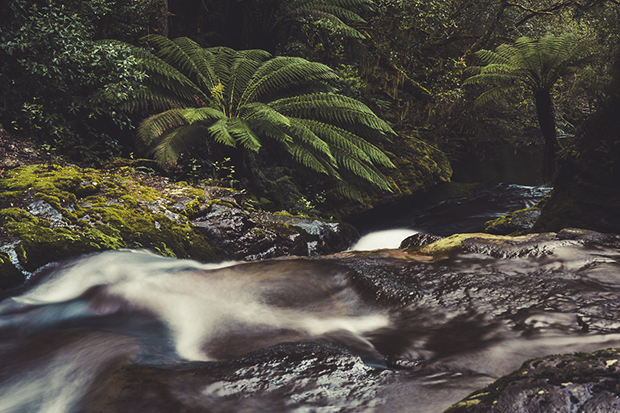
Liffey Falls. Photo: Alfonso Calero.
02 BICHENO
I love photographing the rock formations around Bicheno on the east coast of Tasmania. Red lichen gives the rocks a distinctive warm hue, and creates a feeling of an alien landscape. Bicheno is two hours by car from Launceston and two-and-a half hours from Hobart. Park your car and head for the beaches.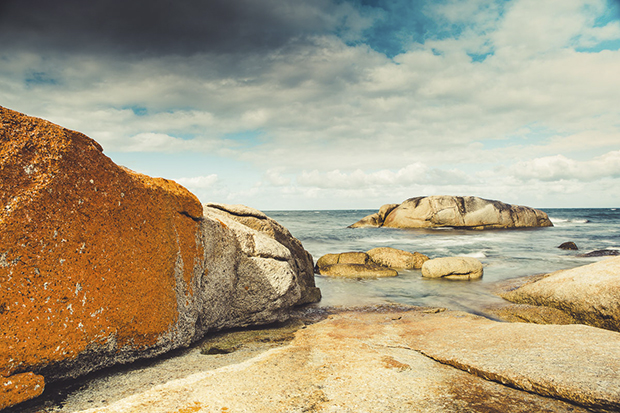
Bicheno. Photo by Alfonso Calero.
03 FREYCINET NATIONAL PARK
Only thirty minutes' drive from Bicheno on the east coast of Tasmania is the Freycinet peninsula, which takes in five spectacularly photogenic locations: Coles Bay, Wineglass Bay, Sleepy Bay, Cape Tourville and The Hazards mountain range. You can camp or rent a house and the views are as beautiful as they are numerous. The Hazards are best photographed from Coles Bay at night or in the late afternoon, while a 45 minute uphill hike will put you in the best position to take in the white sands and emerald waters of Wineglass Bay. Sleepy Bay is well worth a visit at sunrise, as is Cape Tourville. For sunset, Freycinet Lodge is a perfect spot to have a drink and photograph the jetty. Set aside at least two nights in Freycinet, more if you have the time.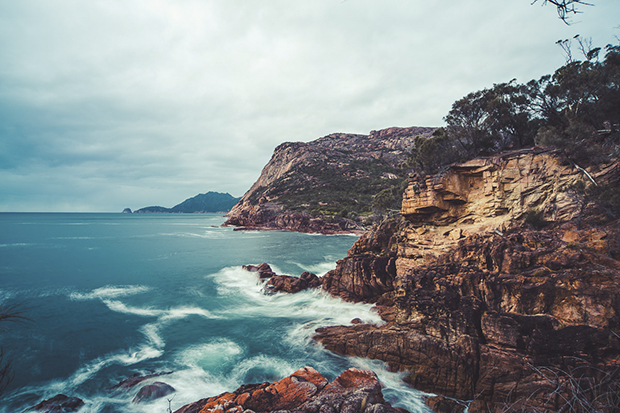
Sleepy Bay, Freycinet National Park. Photo: Alfonso Calero.
04 MT FIELD NATIONAL PARK
Only an hours' drive from Hobart, the Mount Field National Park is home to two of Tasmania's most spectacular sights: Russell and Horseshoe Falls. It's a 15-minute easy walk through the moss forest to Russell Falls while Horseshoe Falls is another 20 minutes uphill. The best time to photograph is in the late afternoon when the light is soft and there are less tourists. Sunrise is good too but requires more preparation to get yourself in the right place at the right time. The moss forest is worth photographing too.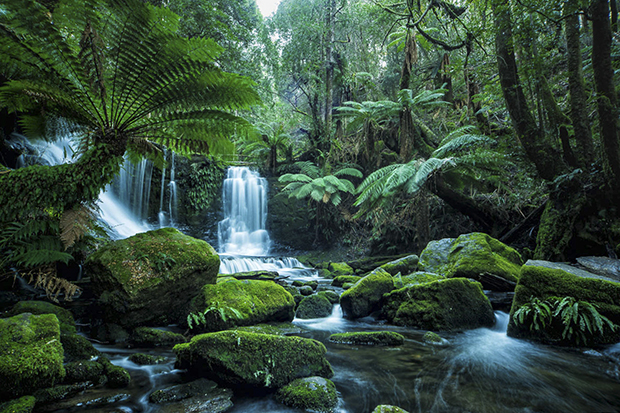
Horseshoe Falls, Mount Field National Park. Photo: Alfonso Calero.
05 CRADLE MOUNTAIN
Two hours drive from Launceston is Dove Lake, well known for it's much-photographed timber boatshed. This is the gateway to Cradle Mountain and the starting point for the world-famous Overland Track, a magnificent six-day walk that will take you through the heart of some of the finest mountain terrain in the world.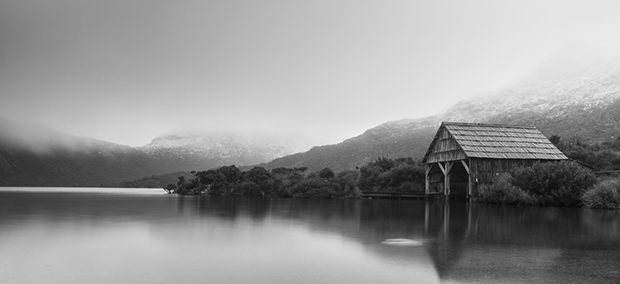
Dove Lake, Cradle Mountain-Lake St Clair National Park. Photo: Alfonso Calero.
Alfonso Calero graduated from the Sydney Institute of Technology with an Associate Diploma in Photography in 2001 and has been professionally photographing fine art, food, portraits, landscapes and travel subjects ever since. He is the owner of a travel education and tours company that delivers workshops every Saturday morning in Sydney, Melbourne, Brisbane, Adelaide and Fremantle. One on one or small group sessions are also available. He also takes groups to Japan, Philippines, Spain and Tasmania once a year for 5, 10 and 14-day photography workshops.
Do you have a favourite photo location in Tasmania that we haven't mentioned? Join the discussion in the comments below.








